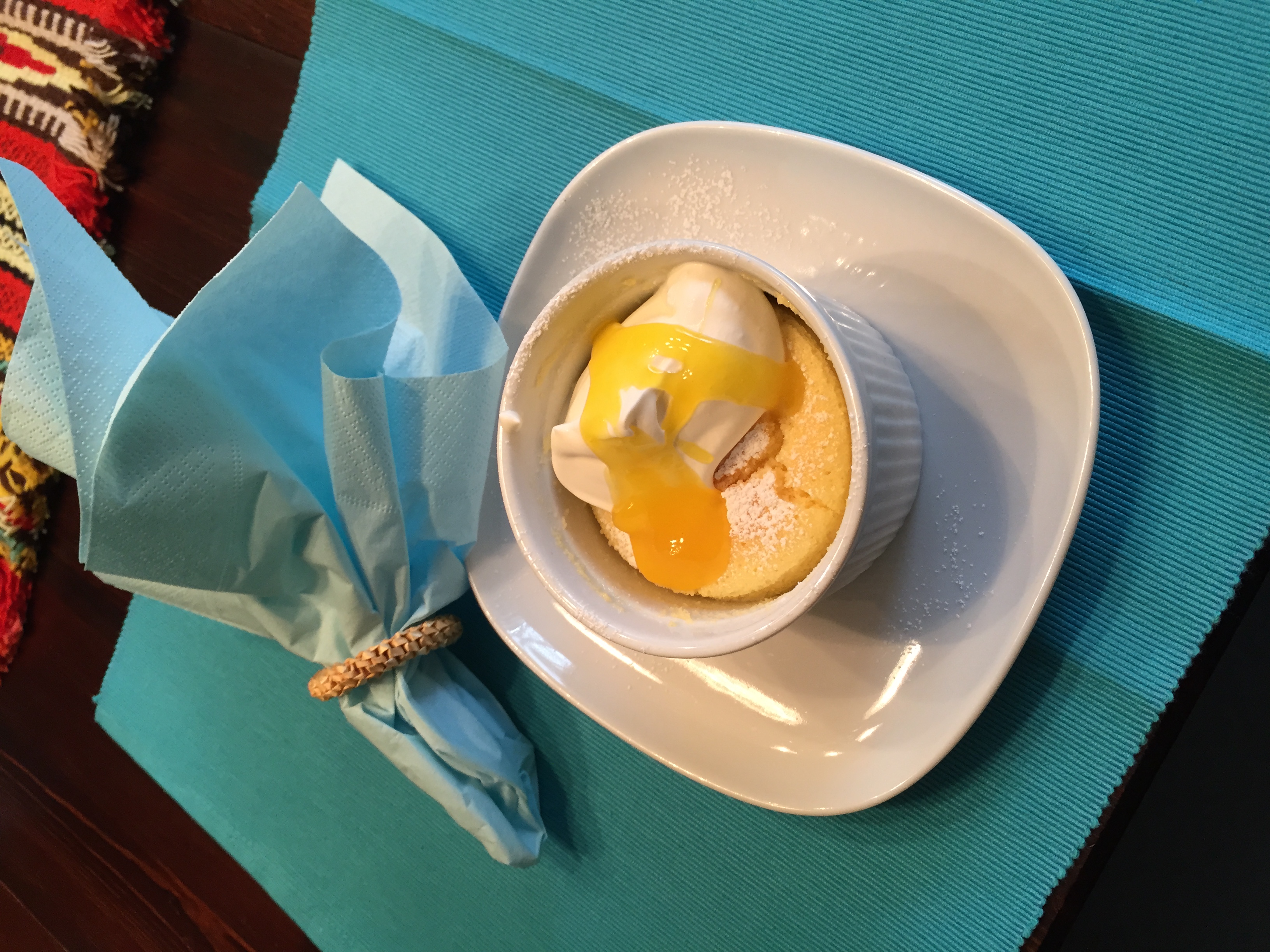"Pudding cakes have been around, in one form or another, since the 1700s. Part of the dessert's appeal is it seemingly magical transformation during baking. A single batter goes into the oven, but comes out as a twofer - an airy soufflé like cake resting on top of a silky lemon pudding." (America's Test Kitchen: The Best of 2015)
Adjust oven rack to middle position and heat oven to 325°. Meanwhile fold dish towel in half and place in bottom of large roasting pan. Place six 6-ounce ramekins on top of towel and set aside pan.
1 cup whole milk
1/2 cup heavy cream
3 TB grated lemon zest
Bring milk and cream to simmer in medium sauce pan, over medium high heat.
Remove sauce pan from heat, whisk in lemon zest, cover saucepan, and let stand for 15 minutes. Strain milk mixture through fine mesh strainer into bowl, pressing on lemon zest to extract liquid. Discard lemon zest.
3/4 cup sugar
1/4 cup all-purpose flour
1/2 tsp baking powder
1/8 tsp salt
2 large egg yolks
1/2 tsp vanilla extract
1/2 lemon juice
4 egg whites
1/4 cup sugar
Whisk sugar, flour, baking powder, and salt in second bowl until combined.
Gently combine egg yolks, vanilla, lemon juice. Add to milk mixture and whisk until combined. Batter will have consistency of milk.
Using stand mixer fitted with whisk, whip egg whites on medium low speed until foamy - about 1 minute. Increase speed to medium-high and whip whites to soft billowy mounds - about 1 minute. Gradually add 1/4 cup sugar and whip until glossy soft peaks form - 1 to 2 minutes.
Whisk one quarter of whites into batter to lighten. Using rubber spatula, gently fold in remaining waits until no clumps or streaks remain. Ladle batter into ramekins (ramekins should be nearly full). Taking care to not splash water onto batter/ramekins - carefully, pour enough cold water into pan to come one third of the way up sides of ramekins. Bake until cake is set and pale golden brown and pudding layer registers 172 to 175 degrees at centre - 50 to 55 minutes. (If oven has a "hot spot", rotate pan once for even baking. Carefully remove pan from oven and let ramekins stand in a water bath for 10 minutes longer. Transfer ramekins to wire rack and let cool completely. Serve. (I serve these with a sprinkling of icing sugar, a dollop of whipped cream and a garnish of purchased lemon curd. Encourage guests to scoop down to the bottom to enjoy the soufflé type cake at the same time as the pudding at the bottom.
Notes and Tips...
- Dish towel in roasting pan - several recipes in my repertoire use this approach. Best to use a plain towel - coloured dish towels can leach their colour; complex enough handling a large roasting pan of super hot water - never mind hot, coloured water...
- Lemons - about 3 needed to yield required amounts of zest and juice; I always "wash" / dry citrus fruits before zesting; citrus fruits yield more juice if they are rolled on the counter while pressing firmly - do this after the zest has been removed
- Salt - will use this moment to mention the differences in salt. Most experts recommend the usual fine table salt for baking rather than coarse salt (see detailed Tips)
- Eggs - all together, 4 eggs required; while I have ideas for using leftover egg whites, no idea what to do with extra yolks
- Bake until - must be my oven, but puddings were still somewhat pale even though I was measuring the required temp; I pulled them at 55 minutes.
- Pudding layer temperature - a case where a Thermapen comes in handy.
- Make ahead - best fresh, but if necessary can be done day before. I cover puddings with plastic wrap and refrigerate. Next day I bring them to room temperature and before serving they can be set into a bowl of very hot water coming 1/3 way up the sides (as in baking method). This warms the runny pudding at the bottom.
